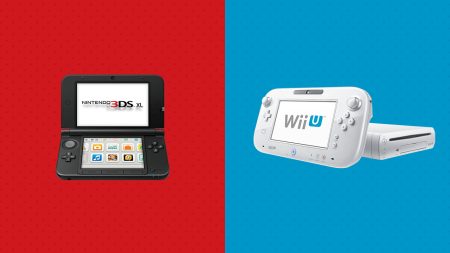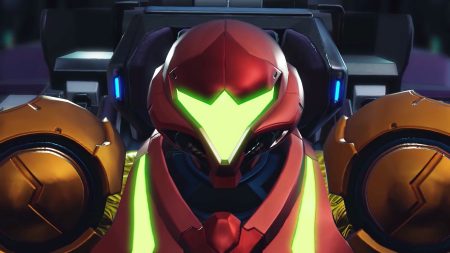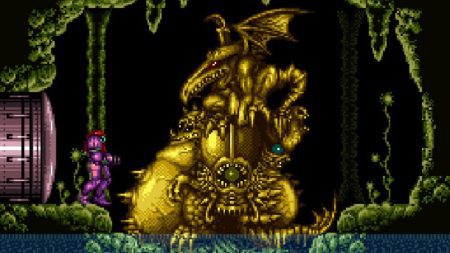In a previous blog, I discussed the upcoming closures of the Nintendo 3DS and Wii U eShops and brought up several Virtual Console titles I purchased in anticipation of said closures. In this piece, I want to highlight my experiences with the best of them, what works or doesn’t work, and why their place in gaming history matters. Staying on brand, every single one of these is a first-party Nintendo game.
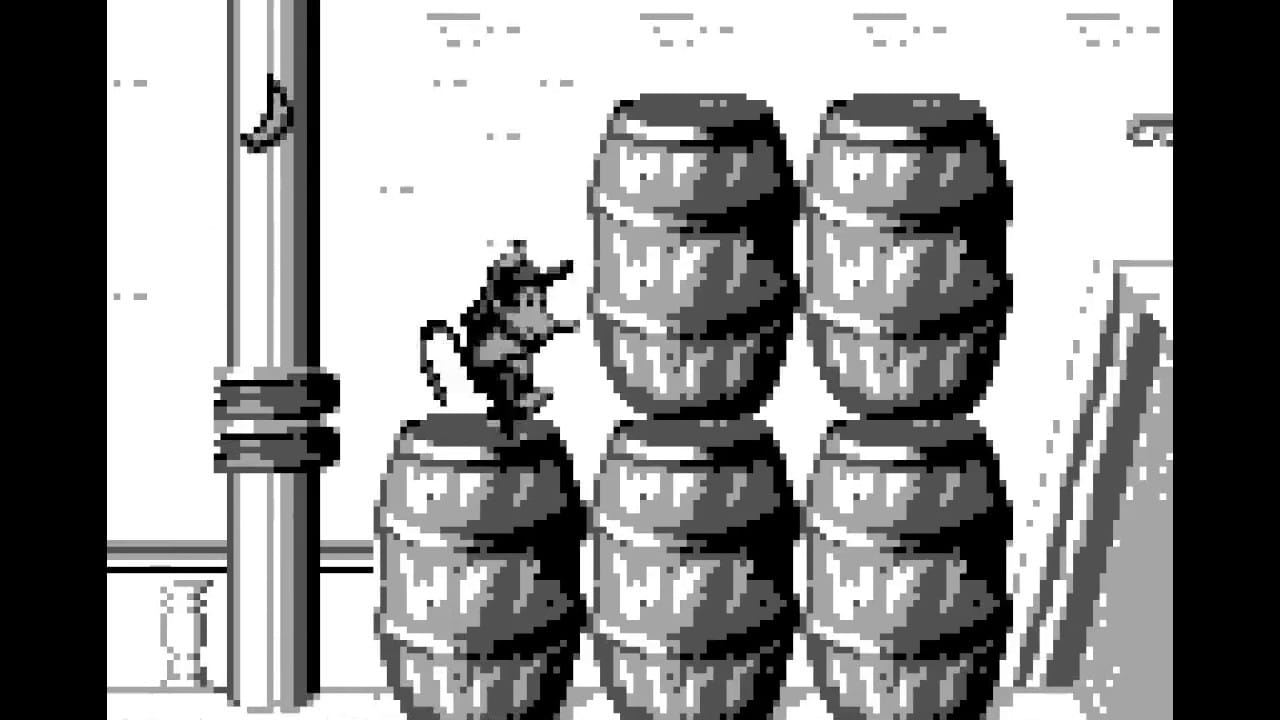
Donkey Kong Land 2 – Nintendo 3DS
Released on the Game Boy in 1996, Donkey Kong Land 2 is a handheld conversion of 1995’s Super Nintendo title Donkey Kong Country 2, with (obviously) downgraded graphics, sound, and animations. In addition, there are fewer levels in DKL2 than in DKC2, and the levels that did make the cut are pared down and somewhat reimagined. Essentially, Donkey Kong Land 2 is a flat-out worse version of Donkey Kong Country 2 (which, I must remind everyone, is one of the greatest games ever made).
Why Did I Want To Play It?
For the most part, I tried DKL2 out of curiosity. Despite being a rabid fan of the Donkey Kong Country series, the Land spinoffs largely escaped my notice as a kid. I figured if I wanted to try any of them out, I’d play the one most likely to remind me of one of my favorite SNES titles.
So… How Is It?
It’s not bad! Clearly, it doesn’t hold a candle to DKC2, and even lacks many of its best features and components, such as character sound effects, partner abilities, and enemy variants. While the more restricted set of levels makes sense given what was possible on the original Game Boy, the levels that did make it over are noticeably inferior, as the smaller screen limits your understanding of your surroundings and makes it a lot easier to die (and miss out on delightful secrets). In addition, the lack of a bright color palette robs DKL2 of the gorgeous art direction found in DKC2, and therefore limits the emotional impact of its atmospheric brilliance.
Taken on its own terms, though, DKL2 is a cromulent platformer that maintains as much of the spirit of its console counterpart as possible. The character and enemy designs still look excellent, the 8-bit versions of the original soundtrack are still a delight, and the level design, though noticeably worse, is still clever and fun. Plus, I appreciate the re-worked boss battles, which maintain the same chaotic energy from DKC2 but are converted to work intuitively on a smaller screen.
DKL2 is not the most impressive platformer out there, but it’s a good time for any fan of the series.
(Fun fact: the converted soundtrack for DKL2 was one of the first big video game scores done by Grant Kirkhope, who would go on to compose legendary music for Goldeneye 007, Banjo-Kazooie, and Perfect Dark. That he was able to turn a legendary SNES soundtrack into something workable on a handheld in the mid-’90s is a testament to his genius.)
What Did I Learn?
My biggest takeaway from my first-ever playthrough of Donkey Kong Land 2 is that while the Game Boy is one of the most iconic and influential video game systems of all time, most of its library was defined by lesser versions of console titles. With a handful of exceptions (Pokémon Red/Blue/Yellow, Link’s Awakening, etc.), many of the most notable titles on the handheld were “good enough” versions of games like Donkey Kong Country, Super Mario World, and even Final Fantasy.
DKL2 is a good game, and I’m surprised it mostly holds up just fine, but I would never recommend it ahead of any of the original DKC games, especially since they’re all playable on Switch now. Still, I would have loved to have it on my Game Boy back in the day.

Donkey Kong (1994) – Nintendo 3DS
Released on the Game Boy in 1994, Donkey Kong (known more colloquially as Donkey Kong ‘94) starts out as a handheld remake of the seminal 1980 arcade game, but evolves into something much more—a genuinely clever and exciting puzzle platformer starring Mario that was unlike any other 2D Mario game available at the time.
The title, which features over 100 unique stages, offers more than the arcade namesake’s basic barrel-jumping and ladder-climbing; it gives the player a wide array of hazardous puzzle challenges, and a myriad of acrobatic moves with which to navigate them.
Why Did I Want To Play It?
DK94 often gets listed as one of the greatest Game Boy games ever made, and I wanted to know for myself whether that’s accurate.
So… How Is It?
Unsurprisingly, it lived up to the hype pretty quickly. I’m obviously no stranger to 2D Mario games, but this one put the mustachioed plumber in scenarios completely new to me. Certain levels require expert use of platforming mechanics (including a backflip and even a headstand), but most of them involve critical and imaginative thinking. Most of these stages provide just the right level of difficulty, where the actions available to the player are clear from the start but degrees of friction remain at every turn.
Beyond the stellar gameplay and level design, what impressed me most about DK94 was how I rarely felt like I was playing an “old” game. Obviously, the Game Boy’s lack of color and low processing power made many games ugly and slow, but the visuals in DK94 still appear fairly sharp largely due to expert asset designs. And since most of the gameplay involves puzzle-solving, I never felt like the game was trying to do more than was possible at the time for a handheld. Also, the fact that it maximizes the capabilities of the Game Boy’s controls means I never felt like it had to sacrifice or compromise anything just to work in the first place.
What Did I Learn?
In addition being a flat-out good game, Donkey Kong ‘94 was a sign that Nintendo A) still cared enough about its legacy content in the early ’90s that it would want its oldest titles to live on, and B) continued to see potential for innovation within that legacy content.
You can clearly see DK94’s influence on 2004’s Game Boy Advance title Mario vs. Donkey Kong, but the idea of taking a classic game and expanding it without compromising its integrity has followed in several other Nintendo titles, including The Legend of Zelda: Four Swords, New Super Mario Bros., and Kid Icarus Uprising.
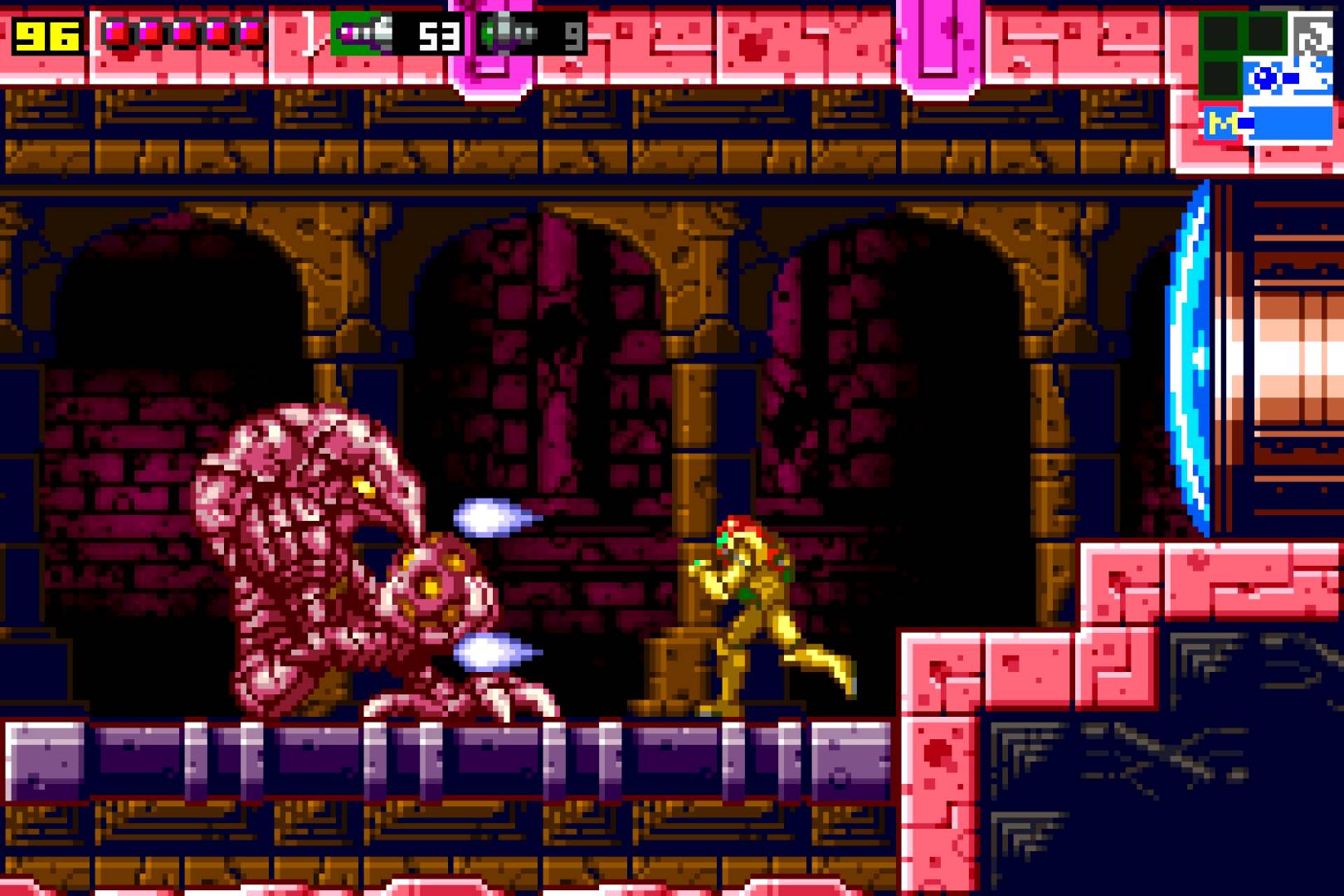
Metroid: Zero Mission – Nintendo Wii U
Released for the Game Boy Advance in 2004, Metroid: Zero Mission is a reimagining of the original Metroid for NES. The remake features enhanced visuals and sound, an overhauled control scheme, and considerably more content than the original, including new abilities, an expanded story, and even a (sort of) postgame sequence involving protagonist Samus Aran navigating an alien ship stealthily without her trademark armor and weapons.
Why Did I Want To Play It?
The GBA Metroid titles somehow completely missed me during that era of gaming, and my previous love-hate relationship (now more just a love-love relationship) with the franchise kept me from seeking them out. Since its release, however, Zero Mission has continued to garner widespread praise from fans of the series, with some even calling it among the best experiences Metroid has to offer.
So… How Is It?
Honestly, Zero Mission quickly entered the conversation for greatest Metroid game I’ve played. The world design builds upon the best of the original Metroid, yet reimagines the most frustrating elements of the 1986 release with a vastly improved minute-to-minute gameplay loop, bigger boss battles, a more intriguing plot, and excellent level and world design. Also, despite being a much easier and more user-friendly title than the original Metroid, Zero Mission still presents plenty of difficulty along the way through the typical spate of breakable walls, unforgiving boss fights, and secret puzzle areas fans of the series expect.
Moreover, the most striking thing to me about Zero Mission was how it took a fairly bare-bones plot and improved the presentation of the narrative while adding layers of mystery and intrigue. Throughout the story, Samus finds brand new secret abilities and areas almost by accident, and such abilities have little apparent use right away. While at first these sections came off as puzzling (and even a little disorienting), the explanation for their existence closer to the end made for an incredible payoff, and one that solidified Zero Mission as a phenomenal game that I can’t believe I’ve avoided for so long.
What Did I Learn?
Besides that I shouldn’t have missed out on an all-time classic? My biggest takeaway from playing Zero Mission is that any big game company looking to do an all-out remake of a beloved work should take notes from Zero Mission because A) the game maintains the spirit of the original while making the experience feel new and B) it feels distinct enough so that it doesn’t make the original feel obsolete, just different. Luckily, Capcom (Resident Evil 2) and Square Enix (Final Fantasy VII Remake) seemed to take notice.

Metroid Fusion – Nintendo Wii U
Metroid Fusion launched on the Game Boy Advance in 2002 on the SAME DAY as Metroid Prime for the GameCube. While Prime brought the franchise into the third dimension for the first time, Fusion returned Samus to her 2D roots, this time with a more linear plot progression and a greater focus on character development. The game would mark the last mainline entry in the Metroid franchise (at least according to game director Yoshio Sakamoto) until 2021’s excellent Metroid Dread.
Why Did I Want To Play It?
Along with the aforementioned Zero Mission, Metroid Fusion passed me by many years ago and I wanted to give it a shot, especially since it’s the canonical lead-in to Metroid Dread, whose story and world captivated me almost as much as any game from last year.
So… How Is It?
It took a little while for Fusion to grip me the way Zero Mission did. The game’s first half is uncharacteristically linear, with an AI quite literally telling Samus exactly where to go anytime she uses a navigation room, and the player needing to seek out such rooms to progress the plot.
Sure, the Terminator-like SA-X (effectively an unkillable Samus clone who hunts the famed heroine throughout the game and appears at random intervals) creates some randomness and excitement. Beyond that, Fusion’s earlier sequences lack the intrigue and friction of Super Metroid and Zero Mission, both of which provide much less guidance and make item and area discovery much more rewarding.
And then there’s the second half.
Without spoiling anything, Fusion launches into a whole new stratosphere once the narrative enters its second half, where Samus has to rely more on her instincts and navigation skills over that of the AI. During this part of the game, the player must find their way through secret mazes within the giant spaceship where the title is set, fighting stronger baddies and solving more nebulous puzzles. Everything concludes in a denouement arguably as scintillating as that of Super Metroid, and a (not-so-surprising) twist just an hour before tactfully explains the bizarre linearity of the first half, making those sections seem better in retrospect.
Overall, Fusion isn’t quite as mesmerizing as Zero Mission, but it’s a damn good time regardless.
What Did I Learn?
I wouldn’t say I learned much in this playthrough, though it was a nice reminder that handhelds carried on the legacy of 2D games in the early 2000s while everyone else had pivoted to 3D entirely. Games like Metroid Fusion just weren’t available on the PlayStation 2 or Xbox, so Fusion’s existence during that era underscored there were still strides to be made in side-scrollers—something more recent fare like Hollow Knight and Dead Cells have also highlighted.
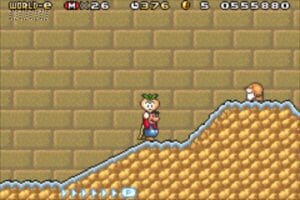
Super Mario Advance 4: Super Mario Bros. 3 – Nintendo Wii U
Super Mario Advance 4 was pretty much a straight-up port of the Super Nintendo version of Super Mario Bros. 3 released on the Game Boy Advance in 2003. Much like the other Mario Advance titles, it features more voice acting and some visual tweaks. What makes the Wii U version of this game notable, however, is its inclusion of dozens of levels only available through use of the Nintendo e-Reader, a short-lived peripheral for the GBA that let users swipe collectible cards for additional content in compatible games.
Why Did I Want To Play It?
Mostly out of curiosity. I consider myself a borderline expert on the language of 2D Mario games, so it made perfect sense for me to try out what may truly be “lost levels.” Also, since e-Reader devices (and the cards themselves) seem difficult to find, realistically this is the only way I’d ever play these levels, unless of course SMA4 gets a Switch port.
So… How Is It?
Kind of a mixed bag? The first levels available are just remakes of early stages from the first Super Mario Bros., and fun as they are, they aren’t that exciting. But then you eventually hit the more clever bonus stages, many of which include features and assets from other Mario games, such as the super cape from Super Mario World and the ability to pull vegetables out of the ground from Super Mario Bros. 2.
Beyond that, most of these levels try really whacky ideas, such as an airship stage that keeps changing the direction of its auto-scroll, or a speed-running challenge that tasks the player with finishing the level in under 20 seconds. These stages are unique, creative, challenging, and at times frustrating, but an overall worthwhile experience.
What Did I Learn?
The actual Super Mario Bros. 3 is one of the best and most influential platformers of all time, but these e-Reader levels proved that Nintendo still had big ideas for its older games.
Nintendo would eventually handle extra content for its products better down the road (as seen in the downloadable level packs for New Super Mario Bros. 2 on the 3DS), but these extra stages reminded me, more than anything, of Super Mario Maker. The e-Reader cards offered levels that took SMB3 assets, jumbled them up into bizarre ideas that wouldn’t be found in the original, and even added enemies and items not found in the original game. So many of these levels (including the aforementioned speedrunner one) felt like user-created content I’d find in either of the Mario Maker titles, and it was interesting to see how Nintendo clearly had these kinds of ideas years before letting creative players run wild.
What’s Your Favorite 3DS or Wii U eShop Game?
I could go on and on about the virtues of playing (and revisiting) older games, but I thought it would just be fun to examine a few right here. Regardless of whether anyone reading this wants to play these games now (and there’s still time), I think it’s always important to remind game enthusiasts that for every shiny new Elden Ring or Triangle Strategy, there are dozens of classic gems waiting for you.
Do you have any favorites on the 3DS and Wii U eShops? Let us know in the comments!
Sam has been playing video games since his earliest years and has been writing about them since 2016. He’s a big fan of Nintendo games and complaining about The Last of Us Part II. You either agree wholeheartedly with his opinions or despise them. There is no in between.
A lifelong New Yorker, Sam views gaming as far more than a silly little pastime, and hopes though critical analysis and in-depth reviews to better understand the medium's artistic merit.
Twitter: @sam_martinelli.








